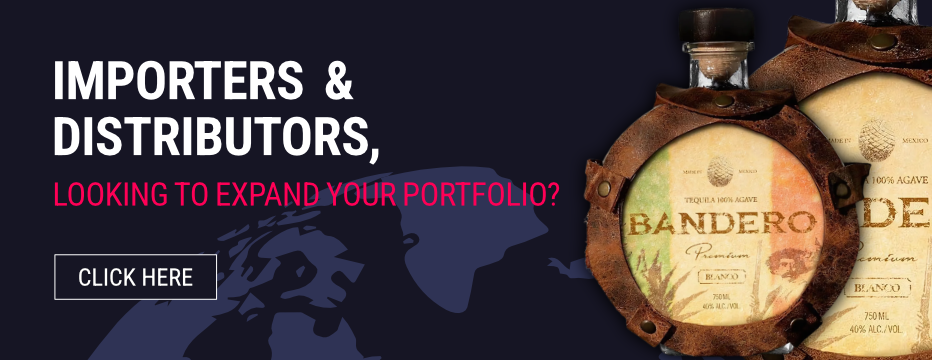Sommeliers Choice Awards 2024 Winners
How To Protect Your Wine, Spirits or Beer Brand Trademark In China
On this page BTN writes about How To Protect Your Beverage Brand Trademark In China and How the Chinese are Challenging Intellectual Property.

China represents the single largest market growth opportunity for wine, beer and spirit producing countries around the world. As a brand driven market, your trademark means everything. Given the importance of protecting your brands, what are the challenges facing a foreign brand owner in China?
.jpg) Failure to register trademarks is one of the principal difficulties that foreign brand owners encounter in the Chinese market.
Failure to register trademarks is one of the principal difficulties that foreign brand owners encounter in the Chinese market.
Some brand owners fail to protect their intellectual property as they mistakenly believe that registration in the U.S. protects them in China. Others underestimate or overestimate the risk of trademark abuse and believe there is little they can do about it. Still others believe that registration is expensive, time consuming and not worth the effort. For others still, business or wine exports may be expanding so rapidly that they unintentionally expose themselves by postponing registration.
Brand owners an take important steps to protect their trademarks and other intellectual property. We recommend that every prospective China business plan include a strategy to protect intellectual property. For those entities already operating in the Chinese market, review your intellectual property to ensure that your protection strategies are keeping up with your innovations and market expansion.
Best Strategies for Developing and Maintaining a Strong Intellectual Property Portfolio
First, do consult a law firm familiar with intellectual property law. The law firm will help you identify those elements of your intellectual property that you should protect and advise you on the process to apply for registration.
Second, do register your intellectual property rights in China. Patents and trademarks registered in the United States or other countries are not protected in China. China’s trademark and patent regimes operate on a ‘first-to-file’ registration system, rather than a ‘first-to-use’ or ‘first-to-invent’ basis. Brand owners who do not register their intellectual property risk having their trademarks registered by others operating in bad faith. While recourse mechanisms do exist to address this type of situation, objection and appeal processes can take years to wind their way through the system at considerable expense and trouble to American wineries. The prudent action is to register your intellectual property as soon as possible. Brand owners are also advised to register the Chinese language versions of their trademarks.
Third, do carry out due diligence on your partners, agents and/or distributors. Unfortunately, associates or former distributors have been a frequent source of intellectual property rights violations. Make sure that you have clear contractual protection for all aspects of intellectual property, including clauses on your ownership rights and use limitations on your partner, distributor, licensee or employees. When hiring employees, it is important to have them sign an agreement that contains clauses on confidentiality, and the use and ownership of intellectual property.
Fourth, do include clear contractual protection for all intellectual property. Contractual problems have also been a reoccurring source of intellectual property infringements. Ensure that you have your own legal counsel (do not rely on the legal advice from your Chinese partner/distributor) before you enter into an agreement and be prudent in conducting negotiations. Remember that the best contracts are those that do not have to be enforced.
Why should I register my trademark in China?
Registering a trademark allows your winery to leverage its brand and prevent others from using your brand or trying to confuse customers with a similar brand. It does take some time and modest resources to register a trademark in China but the alternative – exporting to China without a registered trademark – would leave your brand unprotected and open to considerable risk.
Your registered trademarks in United States are not protected in China unless registered in China. Therefore, if you see good opportunities in China and are looking to remain in the market for the medium to long-term, then it is important to have your trademarks secured right at the beginning. China is a ‘first-to-file’ country meaning that, all else being equal, whoever applies for a trademark first, will obtain the registration. Unless you can manage to do business without your existing brand, seriously consider registering your trademark in China. Also secure other rights such as domain names, company names, patents and copyrights.
Protecting your intellectual property in China is not only a concern for those already selling in China, it is a concern even if you are not now selling your product in China as others may be leveraging your brand in China even if you are not in the China market. The benefit of Chinese system is that any U.S. company can defensively register its trademark in China before it ever sells there.
Additionally, poachers use the Internet and attend large international trade shows to determine up and coming, i.e., potentially valuable brands and registered them in their own name with the hopes of obtaining a not so small fee to get them back. With the Internet, it’s not uncommon for pirates to file for trademarks and then attempt to prevent use by a U.S. brand owner. Again, the benefit of Chinese system is that any U.S. company can defensively register its trademark in China before it ever sells its products there. Please note that trademark registration systems are different in the People's Republic of China , Hong Kong and Macau. Registration in one will not afford protection in the other.
How do I register my trademark in China?
The Chinese Trademark Office (CTO) is the most active Trademark Office in the world. For the past decade, filings for wine brands have proliferated. It is becoming more competitive to secure a brand. An owner of a trademark must file trademark applications with the CTO, which is part of the State Administration for Industry and Commerce (SAIC).
Trademark rights in the U.S. do not extend beyond U.S. borders. Rights must be independently established in each foreign country. Unlike in the U.S. where trademark rights can be based on common law through establishing use of a mark, trademark rights in China can only be established through registration. This is true of most other countries that operate under civil law. Unlike the U.S., most countries, including China, do not require use of the mark in commerce to obtain registration. As a result, the first to file an application for a trademark for particular goods obtains trademark rights. Note that failure to use a registered mark for three consecutive years in China means it will be subject to cancellation.
There are two ways to obtain a trademark registration in China, or most any foreign country for that matter. The first is to directly file in China. The second is through International Registration.
Direct Application
Any U.S. winery can file for trademark registration in any country in the world. Most trademark attorneys maintain an international network of foreign trademark counsel. Companies wishing to register trademarks in China must go through the CTO.
International Registration
Based on your U.S. registration for the same mark, your U.S. trademark counsel can submit an application with the Chinese Trademark Office utilizing the Madrid Protocol an international treaty to which the U.S. is a signatory. U.S. counsel can file an international registration through the United States Patent and Trademark Office (USPTO) based on a U.S. trademark registration and extend protection to other Madrid signatories through the World Intellectual Property Organization (WIPO), including China, but not Hong Kong or Macau.
The benefit of the Madrid Protocol is that you do not need to retain Chinese counsel, which lowers the cost. An additional benefit is that European countries, Japan, Australia, Singapore, Mexico, New Zealand etc. are also signatories thus you can obtain protection in numerous countries at one time. This can streamline and help simplify maintenance requirements for your international trademark portfolio as you just need to renew one international registration, not each and every individual country registrations. Under the Madrid Protocol, there is a mandatory 18 month period for examination and approval/refusal. Should you direct file in China there is not such mandatory examination period and the process may take longer.
One shortcomings of an international registration is that it is tied to the U.S. registration. Should that U.S. registration lapse or fail for any reason, so will the international registration. Also, if refused, one still needs to retain local counsel to respond to a refusal to register. Moreover, countries like Canada, Hong Kong, and several Latin American countries have not implemented the Madrid Protocol and you will have to directly file in those countries in order to obtain a registration.
For any significant foreign market, file a trademark application before distribution, especially in China. Failing to file could result in foreign distributor filing first and usurping your brand. Further, by failing to file, you could be exposing yourself to foreign infringement action if you do not have rights to a mark. There may be significant penalties depending on jurisdiction. You will want to arrange the registration yourself as opposed to, for example, letting your distributor or local partner register for you.
Furthermore, in China, after a trademark license contract is concluded, the licensor shall, within three months, submit a copy of the contract to the CTO. The licensee shall submit another copy of the contract to the SAIC at the county level of his location for reference. In addition, in order to be able to record a license contract, CTO requires that certain elements in the contract. For example, the licensor should supervise the quality of the licensed goods manufactured by the licensee; the licensee should indicate its name and address on the licensed goods, etc.
.jpg) How do I register my patent in China?
How do I register my patent in China?
China and the United States are both signatories to the Patent Cooperation Treaty (PCT). Therefore, when you apply for a patent in the Untied States, you have the option to submit an application for a Chinese patent. In order to register patents in China in this way, companies must initiate the patent process for China within 30 months of the priority date. You may apply for a Chinese patent either within the United States, via the United States Patent and Trademark Office (USPTO) under the Patent Co-operation Treaty (PCT), or directly to the patent office in China. You can find more information on the PCT by contacting the United States Patent and Trademark Office or by visiting the website of the World Intellectual Property Office or the Chinese Intellectual Property Office.
Note that if the patent has already been granted in the United States, it may preclude you from obtaining one in China since your invention will not be considered "new and innovative" in China, unless you apply within a defined period.
In what product class should I register my trademark?
When registering your trademark you will want to make sure your winery registers trademarks in all the appropriate product classes to ensure proper protection. For example, it may be obvious to apply for your trademark under "wine” but you may also want to consider registering your trademark under “alcoholic beverages, excluding beer.” The important point is to cover all the classes of goods you are interested in so that you avoid someone registering your trademark in another class of goods and then competing with your product. Clearly, it is cost prohibitive for the average company to cover all product classes. This is when a trademark attorney will be able to provide guidance.
What other recommendations do you have for my trademark registration?
For your trademark registration, you will want to have Chinese versions of your trademarks. This is important because Chinese consumers will need a Chinese name in order to identify your product. A good Chinese trademark is just as important as your English one. Look for assistance from a person with a strong grasp of Mandarin Chinese to come up with a Chinese trademark so that you avoid any inappropriate or poor trademarks. Treat the registration of your Chinese trademark as important as your English trademark. If a party files for the phonetic transliteration of your mark in Chinese characters before you register your mark in Latin characters, this could block your registration.
It is also important to ensure that your trademark will not infringe on any existing registered trademarks in China. Your trademark attorney can conduct a search to minimize this risk.
.jpg) How do I make sure my trademarks are not infringed?
How do I make sure my trademarks are not infringed?
In terms of prevention, as in the United States or any other market in the world, there is no guarantee that another party will not infringe your rights. Without a registered trademark, however, there would be no effective remedies to put an end to the infringing activities. A registered trademark ensures that you have legal recourse. Admittedly, the last thing any company wants to deal with is a costly court case or lawyer fees, so prevention is key to ensure that problems do not get out of hand. It is important to monitor your partners and distributors as well as the marketplace to ensure that your trademark is not being infringed and that no one is registering a copycat or confusingly similar trademark. It is also important to be selective with your distributors which means proper due diligence to ensure they have good reputations. Finally, even after selecting a good partner, it is prudent to insert intellectual property-related clauses in your agreements.
What can I do to stop the importation/exportation of counterfeit brands?
If you are concerned about importation or exportation of counterfeit brands, you can register your trademark and other intellectual property with Customs.
In the U.S., you can record your registered trademarks with U.S. Customs and Border Protection (CBP). This information is recorded (for a fee) and entered into an electronic database accessible by CBP officers across the country. CBP uses the information to actively monitor shipments and prevent the importation or exportation of infringing goods. You can also record your registered copyrights, but not patents. The advantages of the CBP system are that it stops goods in transit and is available for import and export. This procedure is most useful when you know the port the goods are being exported from. The disadvantages are that storage charges of the infringing goods and other expenses can be high. Also, customs can only inspect a limited amount of goods.
Chinese Customs follows a similar process. In China, patents as well as trademarks and copyrights can be registered with Chinese Customs to prevent the importation or exportation of infringing goods. This can be important if you are experiencing issues with counterfeit wines or a Chinese producer is exporting wine under your brand.
Registration of your brands in China is imperative as China is a rapidly growing wine, beer and spirits consuming nation. Any plan for foreign distribution should include a strategy for foreign registration ahead of such distribution, especially in China.
Protecting your brands intellectual property will cost significantly less then the investment in the labels and packaging itself (labels, closures, bottles, packaging, marketing materials, etc.). Take a closer look at your brands...consider protecting the investment. The investment may prove valuable should the emulators arrive. With so many factors to consider, it’s important that a company creates brands, labels and packaging that are memorable and protectable.
Should you need assistance in identifying protectable elements of a brand or securing registration in the U.S. or world wide, please contact Katja Loeffelholz, a registered attorney with the United States Patent and Trademark Office and of counsel with Dickenson, Peatman & Fogarty at kl@dpf-law.com.
KATJA LOEFFELHOLZ
DICKENSON, PEATMAN & FOGARTY
1455 FIRST STREET, SUITE 301 | NAPA, CA 94559
T: 707.252.7122 | F: 707.255.6876
KL@DPF-LAW.COM | WWW.DPF-LAW.COM
BTN would like to thank Katja Loeffelholz for the article. Learn more about China Wine Market
Are You A Importer or Distributor? Build Your 2014 Portfolio Here (Use the below form)
Looking to source wines, spirits, craft beers or other beverages. Please use the form below to post your Buying Lead. (see examples of Buying Leads)














